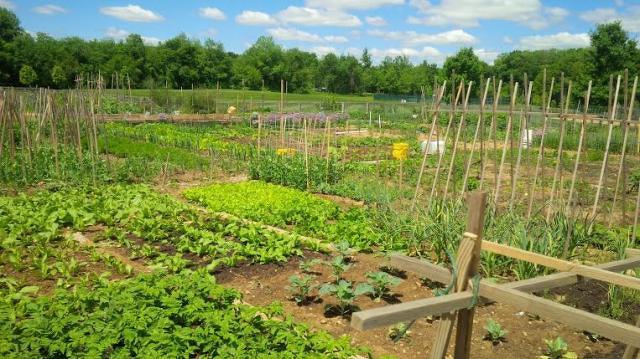“When we try to pick out anything by itself we find it hitched to everything else in the universe.”
— John Muir
Our current situation has been confirming an age-old adage: No man is an island.
Hard hit by our shared global troubles, it would be easy to be self-pitying, but that’s not the path we’ve traditionally chosen in trying times. Instead, we resorted to home and community as a means of providing for ourselves and reaching out to others.
One of the activities that individuals, families and communities have turned to in the past during stressful times is gardening.
For example, just a few weeks prior to the United States becoming involved in World War I, in March of 1917, Charles Lathrop Pack established the National War Garden Commission, according to an article in History. This commission encouraged Americans to help the war effort by planting, fertilizing, harvesting and storing their own fruits and vegetables. That way more food could be exported to our allies. School and company grounds, parks, backyards and vacant lots were all enlisted to plant “victory gardens.”
Those who were amateur gardeners were given pamphlets with all the instructions of what, when, where and how to plant.
They also received tips on dealing with disease and insect infestation.
The Federal Bureau of Education at the same time initiated a U.S. School Garden Army (USSGA) to mobilize children to enlist as “soldiers of the soil.” The two efforts combined were wildly successful.
The desire for victory gardens re-emerged and was encouraged during World War II, especially when food rationing was instituted in the United States in 1942. Some of the most popular produce grown included beans, beets, cabbage, kale, kohlrabi, lettuce, peas, tomatoes, turnips, squash and Swiss chard.
Victory gardens in wartime served many functions. They helped boost morale, express patriotism, safeguard against food shortages on the home front and eased the burden for commercial farmers. By 1944, almost 20 million victory gardens produced about eight million tons of food. Many families chose to keep their gardens after the war.
Fast forward to the 1970s when urban blight became a major issue in New York City. A woman named Liz Christy and her band of “green guerillas” decided to do something about it.
They took steps by throwing “seed green-aids” over fences of vacant lots, planted sunflower seeds in center meridians of busy New York streets and put flower boxes on the window ledges of abandoned buildings. They sparked an urban community gardening movement that today is made up of 600 community gardens with food grown for their families and neighbors.
Decades later, when the 2008 financial crisis hit, cities impacted the hardest showed spikes in urban gardening.
Most recently, as a reaction to the climate crisis and food chain supply concerns, people have reignited a love of home gardening, especially as it relates to ecological sustainability. They fill their apartments with houseplants like succulents and ferns and grow vegetables in pots on balconies or in front yards.
Some have large gardens and preserve their harvests for future use.
With current events more people, understandably, are keenly interested in growing their own food. According to George Ball, executive chairman of the Burpee Seed Company in Warminster, Pennsylvania, he’s seen spikes in demand for seeds during difficult times but right now, “We’re being flooded with orders.”
For those new to gardening, university extensions are helpful or the National Gardening Association site looks promising.
The latter provides a learning library, plant database, discussion forum and reviews and recommendations of seed companies and nurseries. There are also a number of podcasts.
The benefits of gardening in tough times are many. Gardens become a refuge that soothes mind and soul; they provide a learning tool and sustenance for our own families and others we touch.
Most of all, they provide hope. It makes sense that we would look to comfort in the earth in the throes of great uncertainty.
GARDEN NOTES
If you love to tour gardens as much as I do, housebeautiful.com has a site called “5 Gardens You Can Virtually Tour, Just in Time for the First Day of Spring.” It features these five gardens: Waddesdon Manor, Weddesdon, England (home to the Rothchilds); Claude Monet’s Garden, Giverny, France; Chicago Botanic Garden, Chicago, Illinois; Hawaii Tropical Botanical Garden, Papaikou, Hawaii; and Kew Gardens, Richmond, England. Enjoy.



